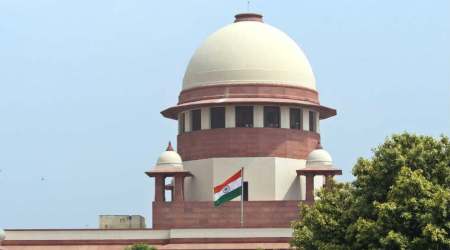 Some say it is a lopsided growth, urge govt to widen its survey and find out the percentage of boys and girls from rural areas. (Express Photo)
Some say it is a lopsided growth, urge govt to widen its survey and find out the percentage of boys and girls from rural areas. (Express Photo)
The Socio-Economic Review of the Gujarat government for 2017-18 shows that the number of girl students in higher education in the state is 40 per cent. According to the report, the number of girl students is 5.90 lakh against 14.57 lakh boys in 2,571 higher educational institutions across the state. And this includes technical, medical and other professional courses as well.
Though many working in the field of education say the 40 per cent of girls share in higher education is quite satisfactory, the report does not make it clear the background of the girl students: how many of them come from rural areas and how many are from urban areas or from which social group or community.
Sukhdev Patel, who has been working for quite a long time in the field of education, says as most of the higher educational centres are located in big cities like Ahmedabad, Vadodara, Surat, Rajkot, Bhavnagar, Junagadh, Mehsana and Gandhinagar or within a periphery of a few kilometres of these cities, it is possible that most of the girl students might be from cities alone and very few from rural areas.
“If it is so, it is a lopsided growth,” said Patel. He wants the government to widen its survey and research and also try to find out what was the percentage of the boys and girls from rural areas out of the total number of students in higher education. “This can provide a broad picture of the higher education scenario in the state and whether the rural population is also benefiting from the growth of private colleges and universities or not,” said Patel, adding that the government survey appears to be incomplete.
He says that one-third area of the state is inhabited mostly by tribals who account for about 15 per cent of the total population in the eastern part of the state called “Purva Patti”, which is facing acute shortage of schools and colleges. “The survey does not speak anything about them,” he says.
But Vallabh Vidyanagar-based Sardar Patel University (SPU) Vice-Chancellor Shirish Kulkarni says that the ratio of girls in higher education is likely to improve tremendously in the next couple of years owing to the state government’s Gunotsav programme (100 per cent enrolment and retention of students at primary level) going on for the last six years. “The effect of this programme launched by the state government will be reflected after a few years when these students reach the college level,” said Kulkarni. He says that there will be some dropout at higher secondary level and at college level as well but the higher education scenario will certainly be better compared to what it is today.
There appears to be some logic in Kulkarni’s assertion because the enrolment of girl students in primary education had gone up to 98.92 per cent in 2016-17 against 99.34 per cent for boys in the same year. But Gujarat University Vice-Chancellor Himanshu Pandya says that the percentage of girl students in higher education is likely to remain low as many of the girl students are found to quit their studies.
For all the latest Education News, download Indian Express App























